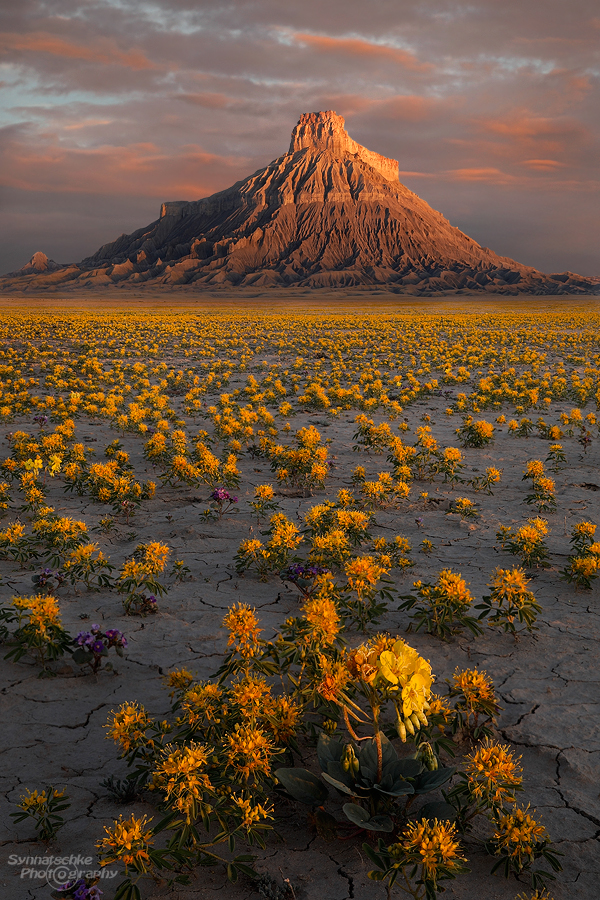
Desert Wildflowers blooming in the American Southwest
Last spring we spent quite a few days around Hanksville, shooting badlands and scouting for wildflowers. We found the barren land surrounding Factory Butte, a prominent landmark just a few miles north of Highway 24, partially covered with seemingly endless fields of Palmer's Bee Plants (Cleomella palmeriana, Rocky Mountain Stinkweed). Their small yellow blossoms just looked perfect at the break of day. And the "cherry on the cake" was a single Yellow Cup (Camissonia brevipes, Mojave Suncup) sticking out among all those Bee Plants. So this is one of our favorite shots from that trip besides the Painted Desert images and the detail compositions of wildflowers in the cracked mud, where some incredible Purple Mat (Nama demissum) joined the Bee Plants.
Each spring the deserts of the American Southwest burst into life, especially when rainfall amounts are above average during the fall and winter months. Evening Primroses and Sand Verbena may bloom in Southern California as early as late January at the Aldogones Dunes and then in February at the Anza Borrego-Desert State Park, Coachella Valley and Death Valley. In 2016 we were happy to witness a superbloom in this arid National Park with thick carpets of Desert Gold spread all across the main valley and some fantastic carpets of Sand Verbena at the remote Ibex Dunes. By mid/late February Poppies, Lupines, Owl Clover, Globemallow and other early flowering plants will start showing up among the huge cactus at Organ Pipe National Momument, while at the parks around Tucson and Phoenix those wildflowers are at their best in early/mid March. Lupines and California Poppies at Tehachapi Mountains and at the famous Antelope Valley near Lancaster/CA usually reach their peak during the month of April. Same applies to the huge fields of blooming Poppies, Goldfields, Tidy-tips, Fiddlenecks, Hillside Daisies, Sun Cups and Baby-blue Eyes at Carrizo Plain National Monument, a lesser visited park protecting the largest remaining native grassland in Central California.
A little bit later, from mid April until early May, it is the perfect time then to explore the area around Hanksville. And we would be doing that again right now (we had our flights booked!), if it weren't for the new devastating virus causing so much misery and such a major global shutdown. Hopefully things will change for the better in the near future! Please stay safe and healthy everyone!
Related links: If you are interested, there more wildflower images and from the Hanksville area in our "Utah Miscellaneous Gallery". Thanks for stopping by!
Image data: 1/30 s at f/16, ISO 400; Canon EF 24-105mm f/4 L IS USM at 50 mm (focus-blended), Canon EOS 5D Mark IV
